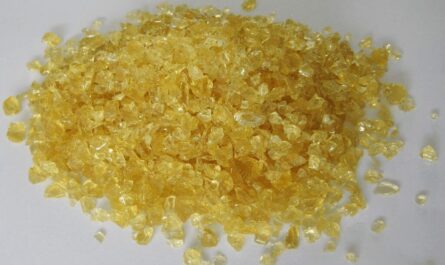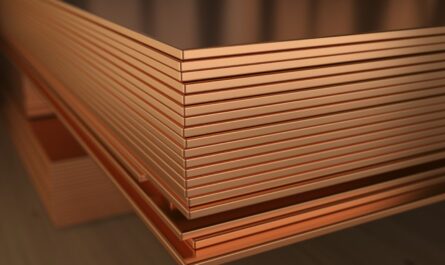The Ever Evolving Role of Purging Compounds in Plastics Manufacturing
History and Development of Purging Compounds
Purging compounds have been used in plastics manufacturing since the early 1960s when they were first introduced as a way to efficiently clean plastic processing equipment. In those early years, basic hydrocarbon-based compounds were primarily used for purging polyvinyl chloride (PVC) and other thermosetting polymers. Throughout the 1970s and 80s, formulators worked to expand the chemical compatibility of purging compounds to clean a wider range of thermoplastic resins including polyolefins, nylons, and engineering polymers.
By the 1990s, the use of advanced purging compounds had become commonplace in automotive, medical, and electrical/electronics applications where stringent material purity and part quality were critically important. Compound manufacturers responded by developing highly engineered formulations tailored for specific polymer families like polypropylene, PET, and engineering resins. Additional properties such as non-abrasiveness, fast extrudability, and low odor were incorporated.
Current Trends and Applications
Today’s purging compounds represent the cutting edge in material science and formulation technology. Compounds are meticulously engineered at a molecular level for optimum performance across different polymer types, processing conditions, and manufacturing environments. Industry-leading formulators continually research and develop new chemistries to address the unique needs of emerging polymer resins and applications.
Some notable current trends and applications for advanced purging compounds include:
– Medical applications: Highly biocompatible compounds are used for purging sensitive thermoplastics like medical grade PVC and polyolefins in critical devices and components. Residual monomer removal is paramount.
– Electrical/electronics: Very low ionicity compounds effectively purge trace contaminants from sensitive resins like PBT, PET, and PPA used in circuit boards and connectors. Non-abrasiveness is essential to protect intricate parts.
– Automotive: Rigorously validated compounds optimize purge efficiency of engineering resins while maintaining dimensional stability of tight-tolerance under-hood components during processing changeovers.
– Film & sheet: Compounds formulated for compatibility with LDPE, LLDPE, and PP remove inks, dyes and plasticizers during color changeovers of packaging, labeling and non-food contact film production.
– 3D printing: New purging compounds have been launched which can be cleanly extruded through fine melt filament deposition print heads without abrasion or residual contamination.
Mechanism of Purging
On a fundamental level, all purging compounds work via the same basic mechanisms to efficiently clear residual polymer, additives and pigments from processing equipment. These mechanisms can be summarized as follows:
– Wetting ability: The compound must thoroughly wet and coat all internal surfaces to solubilize and carry away contaminants. Advanced chemistries maximize a compound’s ability to displace trapped residues.
– Solvency: Select chemical solvents and solubilizing agents work to efficiently dissolve and suspend entrained contaminants present in tight spaces like screw flights and die gaps.
– Thermal conductivity: Rapid heat transfer characteristics ensure the purging compound remains fully molten during the purging process, preventing premature solidification which could trap residues.
– Shear-thinning rheology: Compounds exhibit low viscosity when subjected to high shear forces during extrusion but immediately build viscosity to suspend contaminants once extruded. This optimizes flow properties.
– Molecular compatibility: Properly selected chemical and physical properties, particularly glass transition (Tg), allow compounds to remain fully miscible with target polymers at processing temperatures for complete purging.
Overall, advanced purging compound chemistries and purposeful molecular design have enabled far more efficient purging capabilities compared to early hydrocarbon formulations. Continuous formulations innovation improves the process further.
Optimizing the Purging Process
While an effective purging compound is critical, achieving optimal results also requires properly executing the purging process itself. Some best practices include:
– Thoroughly cleaning all non-extruded surfaces to remove any deposits which could flake off during purging.
– Gradual transition from the previous to purging compound to avoid temperature shocks which could cause cracking or residue build-up.
– Maintaining consistent melt temperatures above the Tg of both previous polymer and purging compound throughout purging.
– Extruding 2-3 times the volume of the barrel being purged to fully displace residues. Longer purges may be needed for more complex parts or intricate die features.
– Inspecting first articles thoroughly for any remaining flecks or deposits which could re-contaminate subsequent runs. Repurging may be needed.
– Careful documentation of purging procedures, frequencies, and quality checks helps ensure a robust purging process. Process validation also verifies effectiveness over time.
When both high-performance compounds and optimized procedural techniques are employed, manufacturers can be confident residual contamination issues are being eliminated affordably and responsibly during production changeovers or cleaning cycles. Purging gives plastics processors peace of mind in even the most demanding applications.
In summary, purging compounds have evolved tremendously from simple cleaners to sophisticated specialty materials science formulations tailored precisely for today’s advanced plastics manufacturing needs. Continuous innovation ensures these important processing aids maintain their ability to efficiently purge both established and emerging polymer systems. Combined with best-practice procedural methods, purging compounds provide plastics processors a versatile and cost-effective solution for maintaining equipment cleanliness and part quality.




